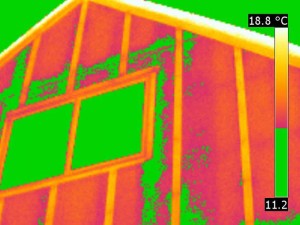More and more consumers today are looking for ways to lower their energy costs. Most know to have windows and doors checked to ensure that there are no air leaks in their homes and many take the initiative to have new energy-efficient heating and cooling units installed. Many also replace their light bulbs with fluorescent bulbs that require less energy to run. Even with all of these considerations, there are things that are being overlooked. The very best way to keep those energy costs down is to use all of these methods together. Remembering to turn out lights when you leave a room and ensuring that you have energy-efficient appliances is a must. If you are looking for the easiest way to lower those costs, there are two very simple things that you should do.
2 Tips for Lower Energy Costs
- Have a programmable thermostat installed. One of the main reasons for energy cost increases in a home is the heating and air unit. Many people have no idea just how much energy it costs to run a heating unit. If you are someone who frequently changes the temperature in your home, it could be costing you even more. Turning the thermostat up and down many times during the day can be very costly. A thermostat that is programmable will give you the opportunity to choose the temperature that you want for different periods of the day. If your family is going to be gone from home, you can have the thermostat set at a lower temperature to save energy. The same is true of your cooling system. While the thermostat will set you back a bit to have it installed, the money that you will save in energy costs will make it well worth the purchase. If you are not comfortable with installing a thermostat on your own, you can have it done fairly inexpensively.
- Check your insulation. A home that is not properly insulated will lose heat and cool air through cracks in windows, flooring, roofing, and doors. This means that your heating and cooling unit will be working overtime in order to compensate for those leaks. When your unit works more, your energy costs are higher. If your home is several years old and the insulation has never been checked, you may not have adequate insulation. Older homes may not be up to modern standards, blown-in insulation may have shifted or settled, mice can create air gaps in fiberglass, etc. Check your attic, look at the type of insulation, and measure its thickness. Are your floors insulated? Also, check your caulking. Caulking is a flexible compound that seals cracks around window frames and door frames and other places where two surfaces meet. Over time caulking dries out and splits allowing air and moisture into your walls. It should be checked and repaired every few years to ensure that your home has a tight seal against the weather.
Note: If you are unsure about your insulation, you can hire a professional to come out with an infrared sensor. It is like a camera that measures the heat signature of your house. It will show where the “hot spots” are i.e. where your insulation isn’t doing its job and is letting more heat out than it should. While this may cost you money upfront, it will save you more than you can imagine in the long run. A properly insulated house will cut down considerably on your energy bills and help you to feel comfortable year-round.
Keeping your energy costs down is not impossible. It really is not even difficult. You just have to take the initiative to begin saving energy and the steps that you take will literally pay for themselves in just a short period of time.
See Also:
- The Effect of Renovation on Your Homeowner’s Insurance
- How to Reduce Electric Bills
- DIY Repairs that Will Save You Money
- 5 Tips: Save Money on Simple Home Improvement Projects
- How to Dine Out Without Breaking the Bank
- 30 Ways to Save Money in This Economy
- 4 Tips On Saving Money On Food
- 6 Ways To Control Impulse Spending
- Car Insurance Savings That Most Drivers Overlook

